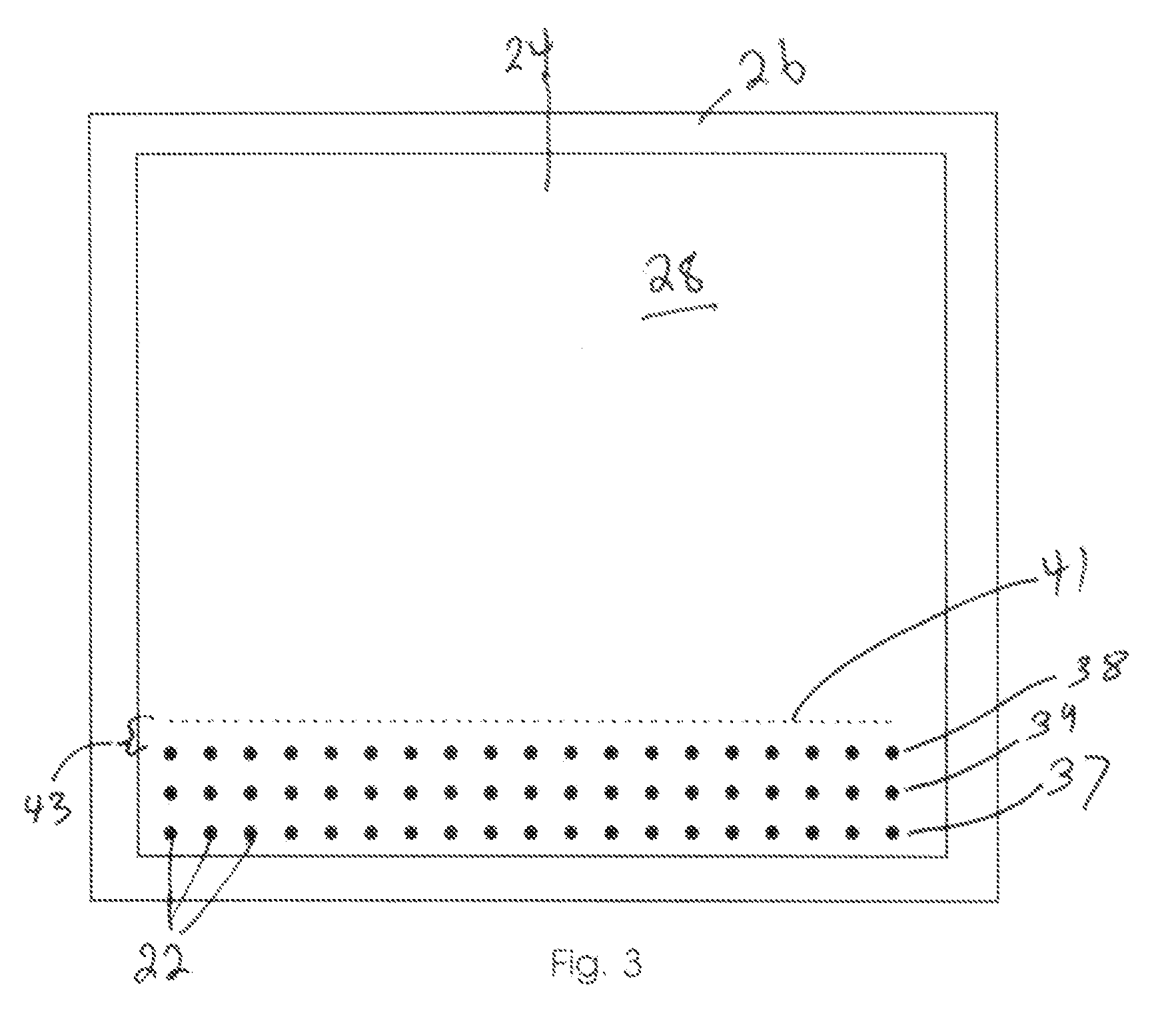Bird Collision Avoidance Treatment for Exterior Glass
a technology for exterior glass and birds, applied in the field of glass, can solve the problems of frequent and fatal collisions with exterior glass, glass less appealing to people, and the effect of stickers on glass is not very effective in deterring bird collisions with glass, and achieves the effect of preventing bird collisions
- Summary
- Abstract
- Description
- Claims
- Application Information
AI Technical Summary
Benefits of technology
Problems solved by technology
Method used
Image
Examples
Embodiment Construction
[0013]Referring to FIG. 1, prior art glass treatments, which were intended to deter bird collisions often included a plurality of visible markings applied to an inside surface of a window or exterior glass. Stickers which have been applied to the exterior surface of glass in order to deter bird collisions often took the form of silhouettes of predatory birds such as falcons and the like. It was believed that such silhouettes discouraged bird collisions by scaring away the birds. FIG. 1 illustrates one such window treatment designed to avoid bird collisions. Pane 10 consists of exterior glass 12 contained in a frame 12. Glass pane 12 has an exterior surface which faces the outside environment and an inside surface which faces the building interior. A prior art anti-bird collision treatment, which has been applied to glass 10, consists of a plurality of markings 16 which are placed some distance from each other. To maximize visibility to birds, markings 16 are dark and take the form o...
PUM
 Login to View More
Login to View More Abstract
Description
Claims
Application Information
 Login to View More
Login to View More - R&D
- Intellectual Property
- Life Sciences
- Materials
- Tech Scout
- Unparalleled Data Quality
- Higher Quality Content
- 60% Fewer Hallucinations
Browse by: Latest US Patents, China's latest patents, Technical Efficacy Thesaurus, Application Domain, Technology Topic, Popular Technical Reports.
© 2025 PatSnap. All rights reserved.Legal|Privacy policy|Modern Slavery Act Transparency Statement|Sitemap|About US| Contact US: help@patsnap.com



